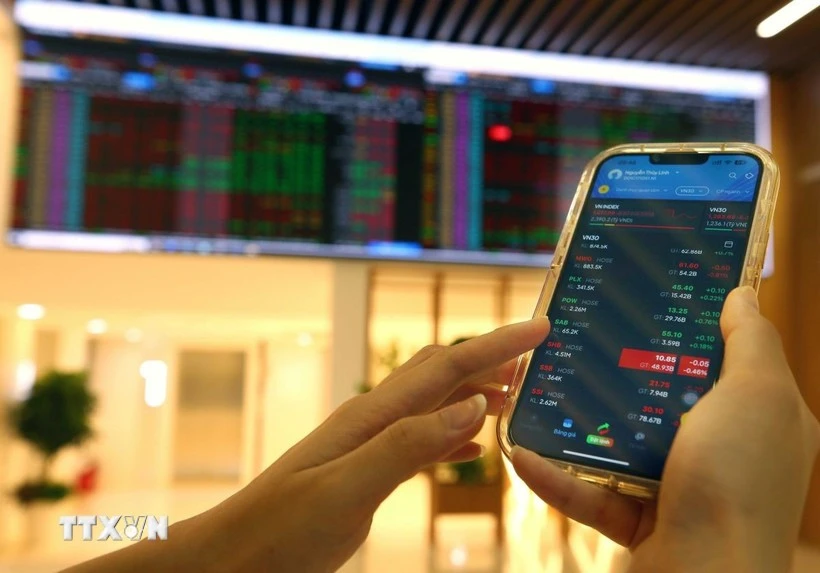The state power company EVN recently decided to hike electricity prices by an average of 2,103.11 VND per kWh starting October 11. This adjustment equals an average increase of 4.8% from the current retail prices.
Concerns over price rises
According to EVN, about 17.4 million households use less than 200 kWh per month, so their monthly electricity bills will increase by 13,800 VND. Households using 300-400 kWh per month will incur an additional 47,000 VND each month, while those using over 400 kWh per month will have to pay an extra 62,000 VND each month.
Poor households still enjoy cash equivalent support of up to 30 kWh per month, while policy beneficiary households are also supported with equivalent amounts as long as they use less than 50 kWh per month.
The additional monthly electricity bill is estimated at 247,000 VND for service customers, 499,000 for production customers, and 91,000 for administrative customers. The latest electricity price hike will increase the CPI by about 0.04 points.
However, Bich Hong (in Cau Giay District, Hanoi) said that despite using electricity economically, her average monthly bill is still nearly 700,000 VND. Now that electricity prices have increased again, she’s worried that many other expenses will surely go up in tandem with the higher electricity prices.
“The final months of the year are when prices of goods and living expenses increase sharply. But now the increase in electricity prices could be an excuse for consumer goods prices to increase early, even before the Lunar New Year.”
Sharing the same concern, Hong Xuan (in Ha Dong District, Hanoi) said that for more than a month, the price of many items, especially fresh vegetables, has increased after Typhoon Yagi. Before she could rejoice at the decrease in vegetable prices, electricity prices increased again, which would cause the prices of other goods to rise.
In the manufacturing sector, Phi Ngoc Trinh, General Director of Ho Guom Garment Joint Stock Company, said that since the beginning of 2024, orders from major markets such as the EU have been continuously pouring in. Up to now, the company has been fully booked with orders until the end of the year, and some items even have orders until the Lunar New Year holiday in 2025.
However, electricity price hikes at this time are a challenge for businesses. He said, “Electricity prices account for 2-3% of production costs, so increasing electricity prices will increase product prices. However, it is difficult to raise product prices at present, so businesses will have to accept a decrease in their profits.”
 |
| Higher electricity prices will increase the manufacturing costs and product prices. (Photo: Hai Nam) |
Avoiding hiking prices of multiple goods simultaneously
According to Nguyen Thu Oanh, Director of the GSO’s Price Statistics Department, the average electricity price rise of 0.48% will only increase the CPI in the fourth quarter by 0.04 percentage points and 0.12 percentage points for the whole year of 2025.
However, as the economy recovers and grows well, the amount of electricity consumed in the coming time will also increase, thereby affecting inflation. In addition, some factors need to be carefully monitored to control inflation in the final months of the year, such as risks of natural disasters and adverse weather that can increase food prices in some localities.
At the same time, during the final months of the year and year-end holidays, prices of food, beverages, clothing and household appliances usually increase, which also causes the CPI to inch up.
In the meantime, input material prices are high on the global market, and the world’s economic and political situation is evolving in an increasingly complex and unpredictable direction. Vietnam imports many raw materials for production, so fluctuations in world commodity prices will affect costs and prices, creating pressure on businesses and pushing up the prices of domestic consumer goods.
In addition, high USD exchange rates are increasing the costs of importing raw materials and fuels, placing pressure on the prices of domestic goods. “Stimulus packages, lower lending interest rates, expanding credit and public investment acceleration can help ease difficulties for the economy, but can also put pressure on the price levels if money supply is not controlled properly.”
According to Oanh, the average CPI in the first 9 months of this year already increased by 3.88%. Compared to the target of 4.5% set by the National Assembly, there is confidence that the inflation target will be achieved.
Therefore, the GSO has forecast that this year’s inflation will be around 4%, creating room for price management of state-managed goods in the final months of the year. However, the timing and level of adjustment need to be taken into account to avoid adjusting the prices of multiple goods simultaneously, which will create expected inflation and put pressure on price management in 2025. The government also needs to control the prices of other goods to prevent them from rising along with electricity price hikes.
According to Le Duy Binh, CEO of Economica Vietnam, despite being kept in check, inflationary pressure is still increasing, not only from the increase in electricity prices but also from the adjustment of some goods and services at the end of the year.
If inflation increases too much, it will affect consumer behaviour and directly affect businesses’ investment decisions. Therefore, it is necessary to give priority to monitoring this index and make appropriate adjustments to ensure the major balances of the economy.
In that context, along with the efforts of the government, ministries and agencies to implement solutions to keep prices under control, Vietnam is also enjoying favourable conditions from the international market. Specifically, the US Federal Reserve recently cut the base interest rate by 0.5 percentage points, which benefits the Vietnamese economy by reducing pressure on the Vietnamese dong, opening up opportunities to lower domestic interest rates.
Binh expressed his confidence that inflationary pressure will fall until the end of the year if smart, flexible, proactive management policies can maintain inflation as targeted by the Government and the National Assembly.
















